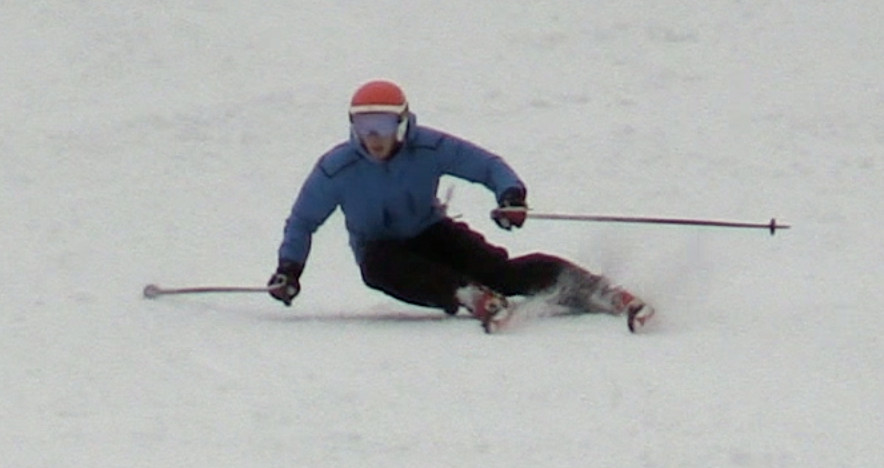Where do we separate upper and lower body
Subscribe
Pub
Share
The separation of the upper and lower body is one of the most important skills of any great skier... but where exactly is it most effective to separate the two? The hip? The pelvis? The core?
The two components of effective separation, the key movements 2 and 4 above, those that decouple the upper body from the lower body are:
- Counterbalancing in the lateral plane, which separates the upper body from the lower body, as it is inclining into the turn (thus creating angulation)
- Counteraction in the "rotational" plane, which separates the upper body from the lower body turning into the turn (thus creating counter)
But... do the shoulders move together with the arms? Do the hips stay with the boots?
Beginners
When beginners start to separate, they tend to separate around the core, as they put the focus on the shoulders and maybe the arms.
Typical instruction like Keep the shoulders (or body) facing down the slope or the Picture frame or skiing with the poles in front drills tend to create this artificial separation in the core area.
One issue with that is that the spine is stressed, as the separation in this case involves twisting and bending of the spine - so any additional stress (from absorbing a bump or a compensating for a skid etc) will go straight back into the spine.
Also, the range of motion is severely reduced if the skier relies on bending and twisting of the spine to create separation.
Learning new skills, like maintaining a narrow stance, also impacts separation, as visible in the photo above.
Effective separation
Expert skiers figured out that the biggest range of motion for separation is in the hip sockets, where the femurs meet the hips. This joint normally has a large range of motion in all planes, allowing a complete separation of upper and lower body:

The femur-hip joint. By BruceBlaus, CC BY 3.0
So, the most effective separation will occur at the hip joints. Some like to think of it as the femurs turning in all directions in the hips sockets (turning the lower body1) while some prefer to let the skis do the turning and focus on how the upper body should compensate2.
When skiers separate effectively, the hips and shoulders tend to move as a unit either laterally or rotationally and so do the arms.
The result of effective separation in all planes is that the upper body has the appearance of remaining still, while the legs and feet tip and turn underneath, more so in Slalom and less so at speed - where the larger forces require more stacking of the body.
Much better cues to encourage effective separation are Lifting the inside hip and Strong inside half.
The available range of motion of certain joints can be an issue for some - this can be addressed to some extent via dryland training.
And here's some awesome short turns demonstrating separation skills, from Reilly McGlashan:
Talks and sessions:
- Intro to coiling
- Lower body and upper body separation
- Upper and lower body separation again
- Explore coiling
- The coiling contortion
Drills:
Start improving your counteraction
References:
- CSIA++ - Technical Manual 1
- Essentials of skiing, p16 2
- The Pelvis in Counterbalancing
See more in: carving-blog Subscribe You need to log in to post a comment!




